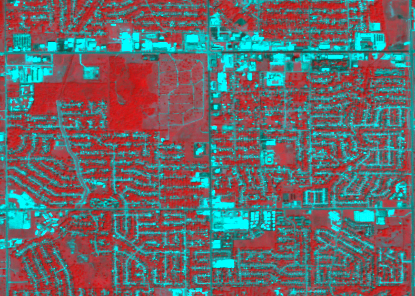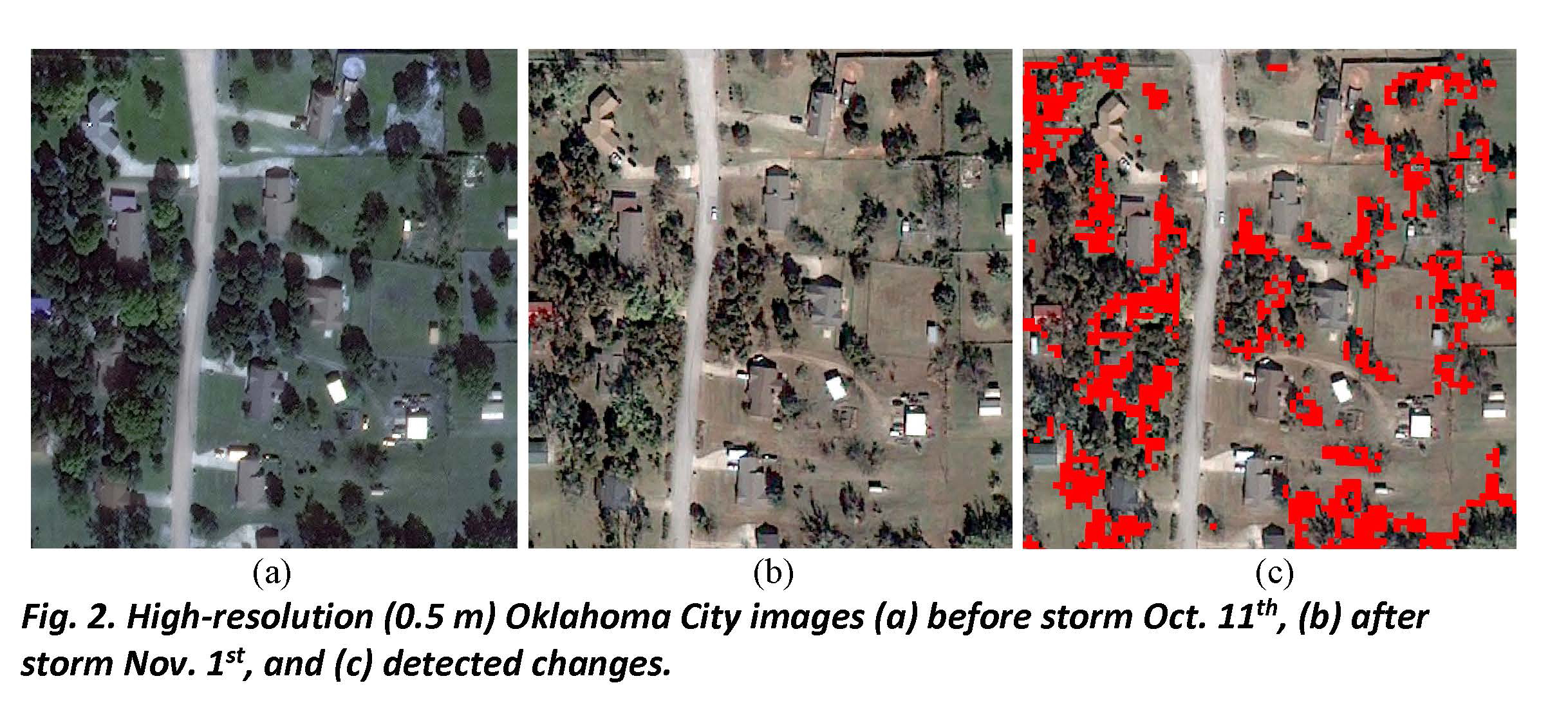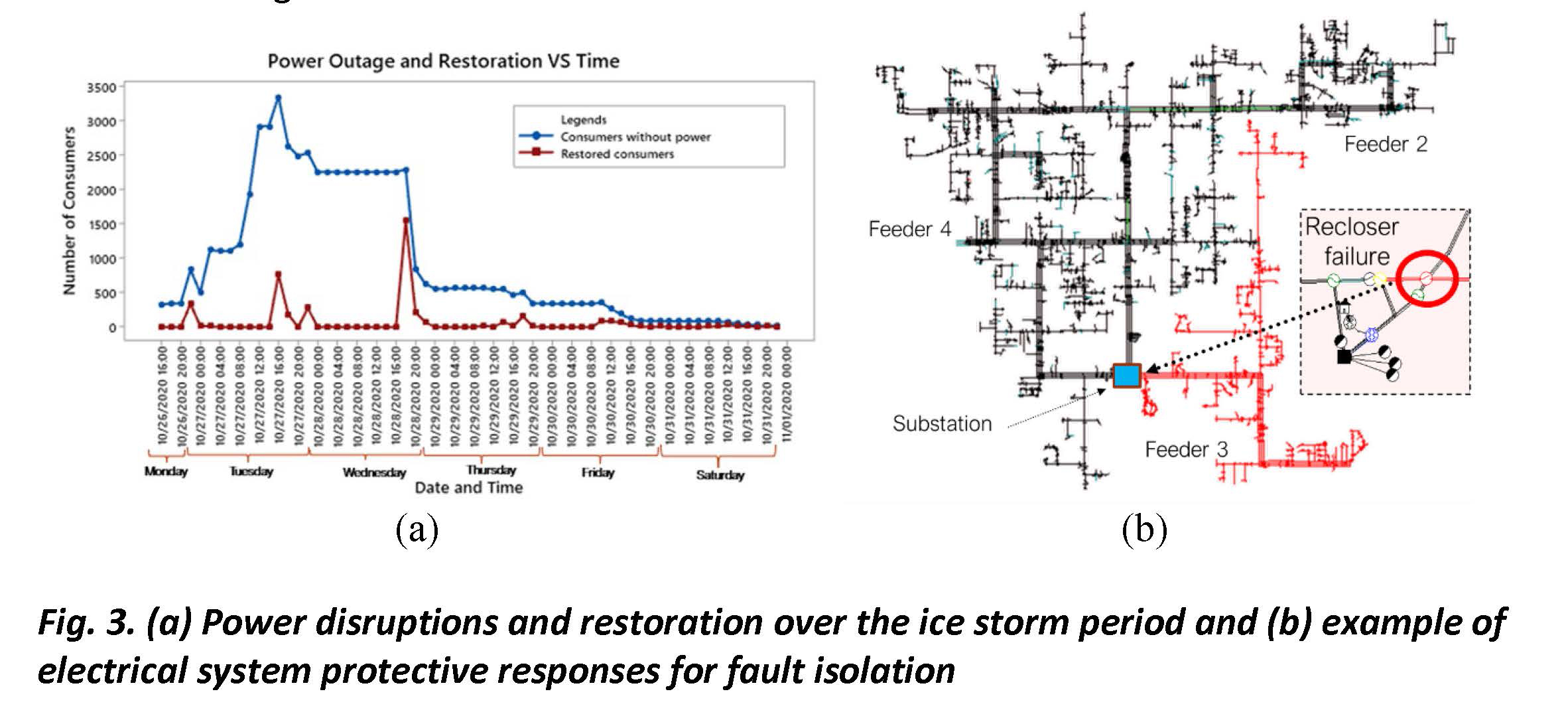
Rare October Ice Storm Caused Widespread Damage in Oklahoma
EPSCoR Update - Sept. 2021
An unusually early ice storm on October 26-28, 2020, caused widespread damage to electric power distribution systems in Oklahoma. Ice accumulation in some areas exceeded 1 inch. This event was unusual in that it was extremely rare, the only October event in the reliable climate record since 1996. The rare ice storm occurred in the mid-fall season where there was still much foliage on trees that caused ice-laden tree limbs to fall onto power lines. Independent of the falling tree limbs, power lines and power poles were also damaged by the ice and high wind. The ice storm left 300,000 Oklahomans without power, some of them for over a week.
Power systems are the backbone of modern societies, but they are very vulnerable to natural hazards such as ice storms. Each year power outages due to ice storms result in extensive economic loss and restoration costs all around the world. Climate change further highlights the need for resilient power distribution systems against ice storms. Therefore, it is very important to develop an ice storm resilience framework for power distribution systems to support decision-making in implementing cost-effective grid hardening strategies.
Hence, Dr. Muralee Muraleetharan from the University of Oklahoma’s School of Civil Engineering and Environmental Science led a team of research scientists (Drs. Scott Harvey, Jerry Miller, Paul Moses, Rifat Bulut (OSU)), post-doctoral researcher (Guangyang Hou), graduate and undergraduate students (Vinushika Panchalogaranjan, Richard Campos, Hussein Al Dakheeli (OSU), Amir Javid (OSU), Kirby Boldes, Maha Narayanan) to quantitatively assess and recommend measures to enhance the ice storm resilience of power distribution systems.
“Our study systematically analyzed the damage caused by this storm to trees, power poles, and wires. We also studied how the delivery of power to customers was affected and how the power was restored after the storm,” Muraleetharan said.
The research team investigated a methodology to detect tree damage during the ice storm using satellite images and a hybrid change detection technique, which uses enhanced composite images from a normalized difference vegetation index (NDVI), and green and blue bands (Fig. 1). This technique then utilizes a random forest supervised classification method to detect changes in tree cover.

Fig. 1. Small area of Oklahoma City composite false RGB image (3 m resolution).
Figure 2 shows the high-resolution Oklahoma City images used for validation of this technique before and after the storm and the detected changes in tree cover.

“In collaboration with the Oklahoma Electric Cooperative (OEC), we investigated the electrical performance of distribution systems during the ice storm in a selected area in Oklahoma City,” Moses said.
“We also studied the effectiveness of the protection system and restoration actions as well as critical component failures,” Moses added.
Figure 3 shows the power outage and the restoration with time for one substation and an instance of a feeder outage resulting from a recloser failure. The actual failure scenarios were simulated using a detailed electrical model of the affected feeders.

Simulations have shown the possibility of reducing customer outages by employing automatic feeder switching that selectively ties adjacent substations to back-feed the network in future designs.
“Our investigation helps to identify the key design factors which impacted the distribution system and highlighted opportunities for improving the resiliency from an electrical networks perspective,” Moses said.
The research team also developed a probabilistic framework to assess and enhance the resilience of power distribution systems subjected to ice storms including ice storm characterization, component (trees, poles, and wires) fragility models, power distribution system performance model, system restoration model and resilience enhancement. The proposed framework is applied to a portion of the power distribution system shown in Fig. 3(b).
“We compared the effectiveness of two grid hardening strategies: upgrading poles and vegetation management,” Hou said.
According to the simulation results (Fig. 4), for an assumed ice storm event with a wind speed of 50 mph, wind direction of west, and ice thickness of 1 inch, the resilience can be improved to different extents by upgrading poles or/and vegetation management in terms of faster restoration times. The resilience index of the power distribution network (ratio between the area under the restoration curve and the restoration time) increases from 0.704 (baseline) to 0.741, 0.751, and 0.792, respectively, for vegetation management, upgrading poles, and both the strategies together.

Infrastructures such as power and transportation don’t operate separately but are highly interconnected and mutually dependent. The interdependency of these infrastructure systems is very critical to the overall resilience of a community. The research team will next assess the resilience of interdependent power and transportation systems subjected to ice storms. Furthermore, the team will investigate interactions between infrastructure systems such as water, natural gas, transportation, and electric power during other weather extreme events, including the February 2021 deep freeze in Texas and Oklahoma.
-----------
Acknowledgement: The research team wishes to thank Drs. Jeff Basara for the ice accumulation information and Xiangming Xiao for information on satellite imagery.
-----------
